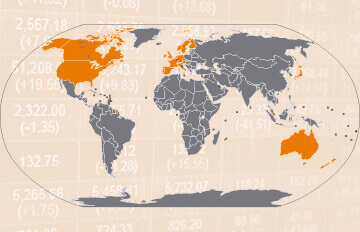
- Level: For all
- Reading duration: 7 minutes
What to expect in this article
Think about what you really enjoy
Marie Kondo supercharged the world of decluttering by asking us to only keep things that “spark joy.” This is the right filter to apply to money-saving, too. There's no point eliminating the things that make life worth living. But the vast majority of us leak cash on stuff that doesn't matter to us. Why? Because life is busy and complex, and often there isn't really time to think things through. Cutting that fat from our spending is the place to focus our attention. The mantra is: only spend on things you truly value. Pull out your credit card and banking statements and think about where you can ditch:- Stuff you don't use
- Things that aren't worth the money
- Items that you wouldn't notice if they were gone
- Goods and services you can buy or substitute more cheaply for no loss of satisfaction
- Products you can buy less often
- Spending on things you feel you should have but, in your heart, know you don't really want or need
- Most people spend something on status signaling goods. Pick your battles! Narrow down the areas where you feel you must compete and cut the rest.
- When you have a monthly spend, multiply it by twelve and see how that feels. Is it worth it? Could that annual sum be spent on something that matters more to you?
- Could you reduce your frequency of spending to every other month and put the 50% savings into your investments?
- Multiply daily spends by 365.
1. Pay yourself first
Decide how much you want to save, then immediately direct debit it to your ETF savings plan the day after you're paid. This is known as "paying yourself first." Try a small amount to begin with, if you're nervous about the impact. However, the magical part is that most people don't feel that they're spending less. Emotionally you automatically adjust to your new monthly spend, while a portion of your money is put to work building wealth in your investment portfolio. If you haven't tried "paying yourself first" then it may not sound feasible. But it works! Just think about how much less you used to live on before pay rises and promotions. Hedonic adaptation means additional spending barely moves our happiness needle after a short while. Our desires simply expand to fill the space, much like new roads don't solve congestion problems. However, the same hedonic effect works in reverse and means you don't feel the pinch when you divert more money to your investments. If anything you're likely to feel more positive because you're proactively solving the challenge of growing your wealth. Here's another useful saving hack: don't spend your pay rises and bonuses. Invest them instead. Or, if that sounds too severe, spend half and save half. It's incredible how much investing momentum you can build with this technique alone.2. Jam jars, piggy banks, and cash stuffing
This method works wonders for some people. The idea is that you divide your monthly income into different pots that enable you to spend more mindfully. One pot of cash covers all the household bills. Another pot takes care of eating out. There's another for travel, and the other main outgoings, and naturally there's a pot for savings too. There are some innovative spending and saving apps out there that automate this process for you. This technique works brilliantly because your essential living expenses are sorted from the get-go. But once you've emptied your 'eating out' pot for the month, most people accept that they've reached their limit and ease off. They don't start raiding their savings to fund another big night. Behavioral economists have noticed this self-disciplining effect and call it mental accounting. Try teaming it with the 50/30/20 approach to spend management. This rule-of-thumb advocates using your income like this:- 50% on your living expenses
- 30% on the fun stuff
- 20% on savings and investments
3. Sleep on it
If you buy a lot of stuff on impulse then try the 48-hour rule. The 48-hour rule means you hold off on a purchase for two days after deciding to drop your cash on it. This gives you a chance to sleep on the decision and decide if it still seems like such a 'must-have' once you've cooled off a little. The psychology behind cooling off periods is that we often buy things in a state of heightened consumption desire. But cooling off gives us a chance to reconsider. Much like how it's best to sleep on any important decision, or to not act in the heat of the moment when quarreling with someone. If you still want the product days later then buy it. If not, you didn't need it in the first place. A handy side effect is that online retailers will often send you a discount if you leave items in your basket for 48 hours or more. That's a bonus if you actually want the item, but don't let the retailer's special offer make you fall for something you'd otherwise resist. Hardcore savers use a 7-day rule and even a 30-day rule. Experiment with what works for you.4. Calculate the price including income taxes
This hack is designed to reveal how hard you really have to work to afford an item. Let's say you want to buy a top for €80. And let's also say that you pay 50% in various taxes on your gross income. That means you have to earn €160 in income to buy the product. Maybe now it's not such a bargain but an expensive luxury you can happily live without.5. Get a better deal
Switching suppliers will save you tons of money on bills, especially if you've never done it before. If you want to prioritize the biggest savings then look for the market-leading offers in these areas first:- broadband
- Phone contract
- Insurance
- Paid TV
6. Food bill hacks
Food is such a large slice of the budget, and supermarket tactics are so sophisticated, that it's well worth becoming a more savvy groceries shopper. The big wins come from eliminating impulse purchases and food waste. Your main allies in that battle are meal-planning and the humble shopping list! Planning makes it easy to know meals what food you really need for the week ahead - cutting out waste at a stroke! Now all you have to do is stick to your list. Two tips here:- Don't shop on an empty stomach, or you'll be tempted to grab all kinds of delicious treats from the shelves.
- Better still, use a supermarket online delivery service. Then there's zero chance of you straying from the list when you're magnetically sucked into the irresistible snacks aisle.
7. Subscription declutter
Subscriptions and memberships multiply like zombies so review them all once a year and cancel any that you don't use regularly. Go through your monthly statements to find them because you might well be paying for services you've completely forgotten about. If you're unsure about a service then cancel. You can always sign up for it again later. Ask yourself two questions about any subscriptions that you keep:- Can I share the plan with friends and family?
- Do they have a cheaper plan that better fits my usage?















